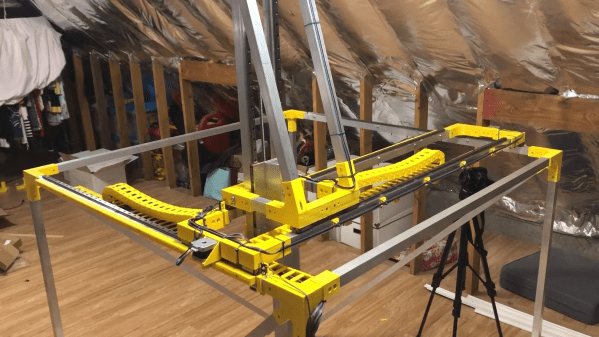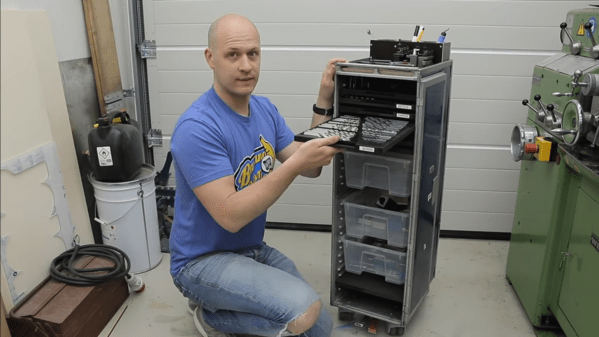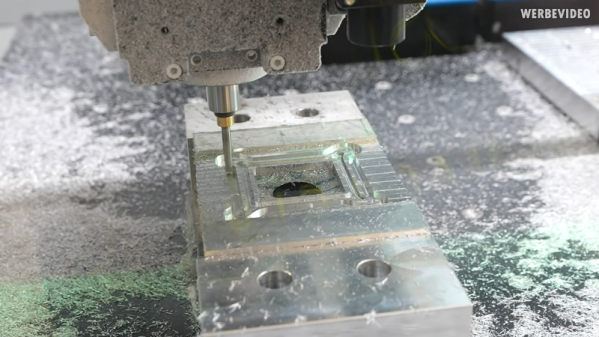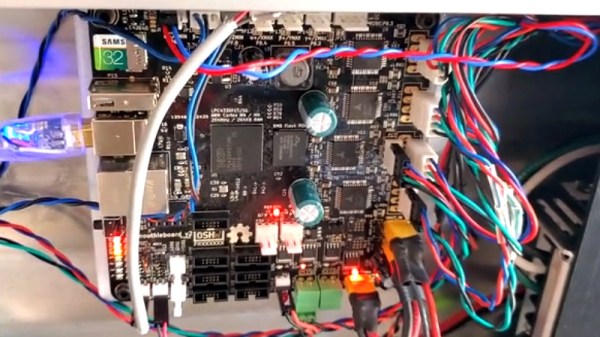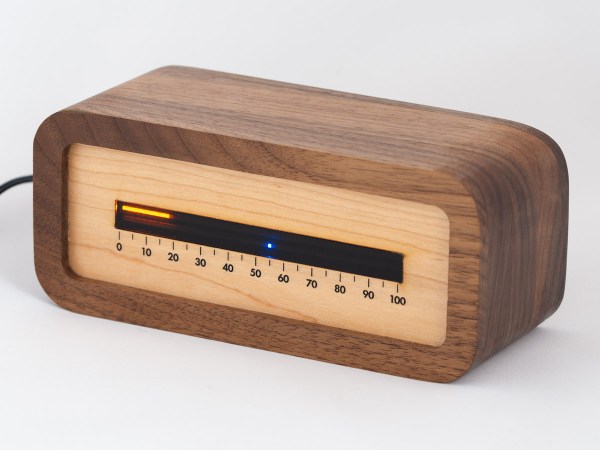There are plenty of designs for table-top 3D printers, engravers, and general CNC machines out there. However, if you wanna build big things and build them fast, sometimes you need a machine that can handle bigger jobs. This gigantic 1x1x1 m 5-axis CNC machine from [Brian Brocken] absolutely fits the bill.
The build relies on 3D-printed components and aluminium tubing to make it accessible for anyone to put together. [Brian] notes that 25×25 mm tubing with a 2 mm wall thickness does an okay job, but those aiming to minimize deflection would do well to upgrade to 5 mm thickness instead. Stepper motors are NEMA 23 size, though the Y-axis uses a pair of NEMA 17s. This is necessary to deal with the immense size of the machine. Control is thanks to an Arduino Mega fitted with a RAMPS board, running the Marlin firmware.
The plan is to use the machine to test out a variety of CNC machining techniques. It could make for a great maxi-sized 3D printer, and should be able to handle some basic 5-axis milling of very soft materials like foams. This might seem silly on the face of it, but it can be of great use for mold making tasks.
We’ve seen giant CNC routers built before, too, and they can readily be put to great use. Video after the break.
Continue reading “Giant CNC Machine Measures A Full Cubic Meter”

